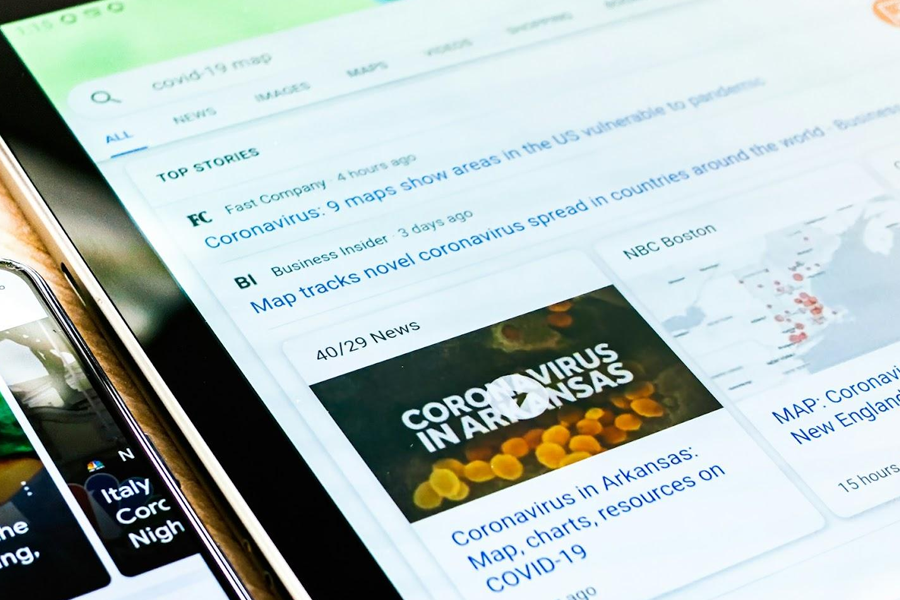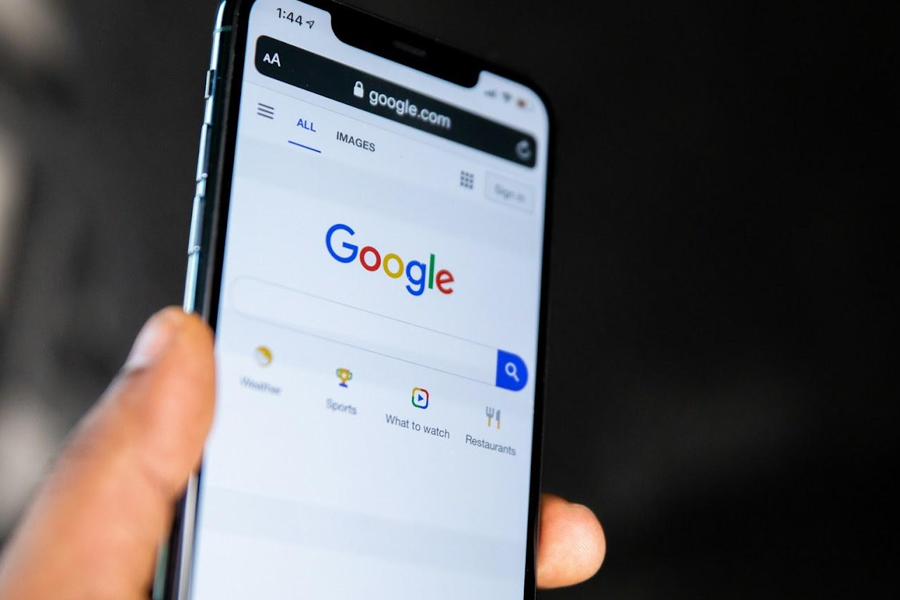If you usually read articles or other online written content, then you might have come across a clickable text. Once you click it, it will redirect you to another page.
This is called the anchor text. It might not seem a big deal for some users, but it is a very crucial factor in the SEO industry. You’ll be surprised how it can impact your ranking on Google and other search engines.
In this article, we will teach you everything you need to know about anchor text – from different types to best practices and more!

Introduction to Anchor Texts: Definition and Importance
Anchor text refers to hyperlinked text that can be clicked by viewers and readers. But, before a text becomes an anchor text (also called link label or link title), you must insert a link.
Usually, the anchor text will have a blue color and become underlined. If you prefer it not to be underlined and have another color, you can change it through HTML code.
The main goal of an anchor text is to guide your readers to a new place on the internet, such as another website or a different article. But, for search engines, the link title is more than just that.
In the digital world, there’s a smart system called Google algorithm, which helps search engines understand what a page is all about. One of the signals that the Google algorithm looks for is the anchor text.
If your anchor texts are good, then your website can easily be detected by Google algorithm, making your web page more visible online. This is why it is important to have an effective anchor text SEO strategy. Before that, you must understand the different kinds of anchor texts.
Ready?

Types of Anchor Texts
There are tons of anchor text variations that can be used so that search engines can rank your website well. By learning their purposes, you can combine different types of anchor text to help search engines better understand your content.
To help you better understand anchor texts, here are the three main kinds you must learn:
Exact Match Anchor Text
According to Semrush, the exact match anchor text is a hyperlinked word with the same keyword of the website it is linking to. For example, if your exact match anchor text is “Digital marketing services” then it should link to an online page about your digital marketing services.
This anchor text uses the exact keyword of the page it links to since it aims to better provide context. It is one of the most common link labels because it helps search engines to better rank websites.
Partial Match Anchor Text
Partial match anchor text is a little bit different from the exact match anchor text. Instead of using the same keyword, the partial match anchor text includes a variation of the keyword.
This means that it could either contain the main keyword partially or fully, together with other relevant words. For example, your anchor text is “anchor text optimization” and the page you’re linking targets “anchor text.”
Branded Anchor Text
The third type is the branded anchor text. It includes the brand name or phrase of your website together with additional keywords. For example, your branded link label is “NEXT BASKET‘s e-commerce platform” and you’re linking to a page describing the purpose, functionalities, and use cases of the platform.
The main purpose of the branded anchor texts is to highlight your business name over a link. Aside from using your own website, you can also link to other reputable brands. When readers see recognizable brands, then they will likely trust your page.
Others
Aside from these three anchor texts, here are other kinds of link titles you can use for your website:
- Generic Anchor Text: Link labels that don’t contain keywords. Some of them are “click here” and “view more.”
- Phrase Match Anchor Text: This link title contains phrases that include targeted keywords.
- Related Keyword Anchor Text: This anchor text contains a similar keyword or phrase related to the targeted keyword of the page.
- Naked Anchor Text: This is a naked link that uses the URL itself as the anchor text. The naked link anchor is used to variate and diversify the link profile of a website.
- Image Anchors: Placing links on images generally creates “empty anchors” as the link itself does not have a text. In these cases, the alt attribute of the image helps search engine crawlers understand the destination of the link.
Knowing the different kinds of anchor texts is essential since you can combine them to improve your website’s ranking on Google and other search engines.
Best Practices for Choosing Relevant and Descriptive Anchor Text
If you want search engines to detect your website, you must optimize your anchor text. To do this, you need to choose relevant and descriptive keywords that best reflect the linked page.
Here are some of the best practices you can follow in your anchor text strategy:
- Choose target keywords that best describe your content.
- Make sure that the surrounding text is relevant to the link title to achieve a natural language flow.
- Avoid keyword stuffing (putting too many keywords) in your anchor text to avoid getting flagged by search engines.
Google ranks websites based on reference contexts. This means that your page should consider both descriptive anchor texts and relevant surrounding texts so that search engines can better understand it.
Optimizing Anchor Text for Internal Linking and Site Structure
Optimizing anchor texts for your site structure can help Google and other search engines find your website’s pages and store them in their database. If you can properly connect different pages on your website, there’s a high chance that your site’s popularity can be boosted.
One of the ways to do this is through internal linking. Internal links are anchor text links that redirect readers to another part of your website. Internal linking is a ranking factor of Google to determine if your website should be on the top search.
Internal links are also essential to your viewers since these help them navigate your website more easily. Think of them as street signs that direct readers to where they want to go.
This is why your anchor texts should effectively match the internal links you’ll be using. The link titles you’ll use should be able to tell readers what they can expect from the other page.
Optimizing your anchor texts for internal links will not only get Google’s attention but will also make your website well-structured.

External Link Building and Anchor Text Optimization
Another thing that Google looks for in a website is external linking. External link building involves inserting links from other websites on your own web page. Just like internal linking, you should also optimize the external anchor text you’ll use for external links. The most common link title used for external linking is branded links.
Since external links will not come from your website, you should choose those from reputable and trusted sources. Also, make sure that your external links contain your targeted keywords or at least have similar content.
Building links that relate your online content to trusted websites, the search engine will likely boost your popularity.
The Relationship Between Anchor Text and Keyword Optimization
In establishing an effective SEO strategy, knowing the relationship between anchor text and keyword optimization is crucial. These two should also be together if you want your website to increase its popularity.
Keyword optimization means finding the target keyword that best describes your online content. Of course, your anchor text should be a target keyword or a related keyword.
But, you must remember using anchor texts that excessively match keywords might be considered as manipulative. This is why it is important to have a balanced approach when it comes to keyword and anchor text optimization.

Avoiding Over-Optimization and Manipulative Anchor Text Practices
Google has rules when it comes to ranking websites. One of these is requiring them not to over-optimize their anchor text practices. If search engines detect over-optimization, then they might see your website as manipulative.
If you use the same anchor text over and over again, Google might conclude that your website is manipulating the search results. Using too many links — internal or external — is also a big NO for search engines.
Since Google wants to ensure that the websites and web pages it’ll rank are user-friendly, it would be best for you to avoid keyword stuffing and other over-optimization anchor text practices.
Anchor Text and User Experience: Providing Context and Navigation
Both users and search engines heavily rely on anchor texts to understand websites. They use link titles to know what a page or website they are viewing is all about.
As mentioned above, anchor texts are like street signs. They help websites in providing context and navigation to readers. By offering a descriptive and relevant link text, you can greatly improve user experience and help Google properly rank your site.
The Impact of Anchor Text on Search Engine Rankings
Anchor texts are a big deal for websites, especially those that aren’t that popular since these impact search engine rankings. This makes the link title one of the most important SEO metrics.
Aside from using targeted keywords, you can also use relevant keywords as your link labels to have keyword rich anchors. Doing this will help search engines determine the context of your page and know if many people are visiting your site.
But, be careful. Anchor texts can also negatively affect your website. You can face penalties for over-optimization, be seen as manipulative for keyword stuffing, or get your credibility diminished for low-quality anchor texts.

Frequently Asked Questions
What is the purpose of anchor text?
Anchor text helps search engines understand what your website is all about and can impact your ranking online.
Is anchor text good for SEO?
Anchor text is crucial to SEO since search engines use it to rank your website.
What are some benefits of good anchor text?
Good anchor texts can help your website have a good ranking on Google, make page navigation easier for users, and keep your website well-structured.